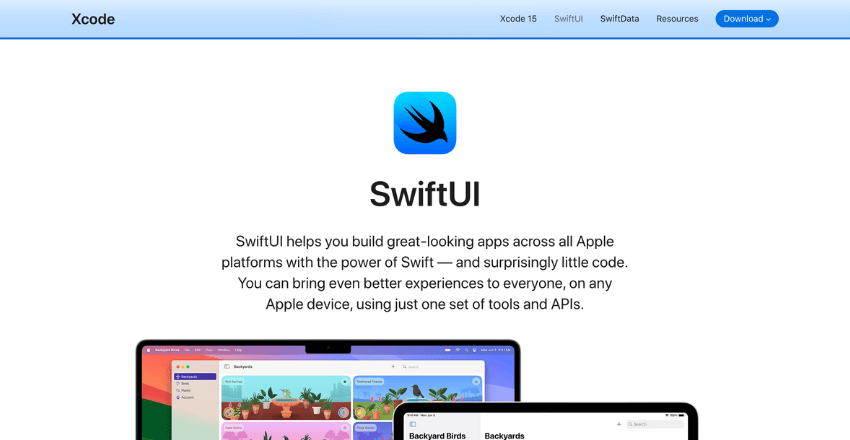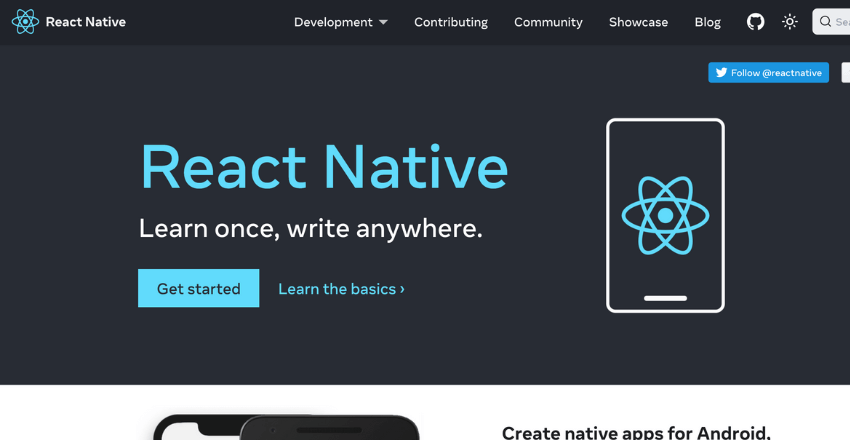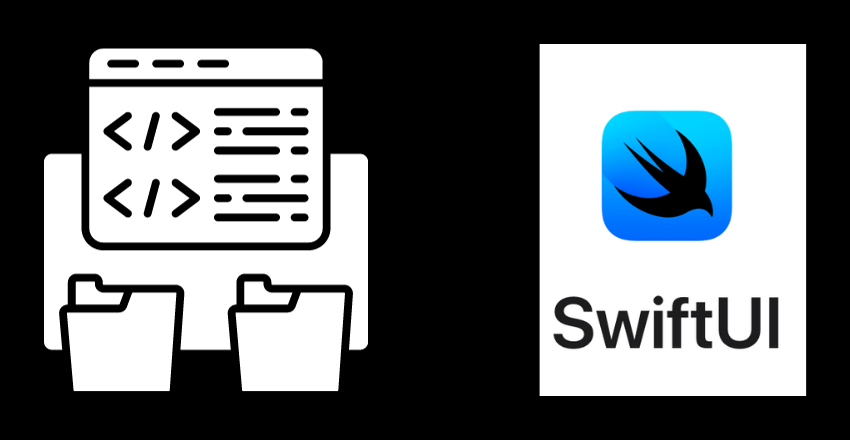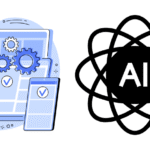 Swift UI vs React Native: contrasting these frameworks’ approach to app development, from Swift UI’s iOS-focused, intuitive design to React Native’s vast cross-platform capabilities.
Swift UI vs React Native: contrasting these frameworks’ approach to app development, from Swift UI’s iOS-focused, intuitive design to React Native’s vast cross-platform capabilities.
The idea that Swift UI is the only logical choice for iOS development completely ignores the power and flexibility of React Native.
React Native, despite its strengths, often gets side-eyed due to common concerns like slower runtime and dependency on Facebook’s whims.
Key Takeaways:
- Swift UI is a UI framework developed by Apple for building user interfaces for iOS, macOS, watchOS, and tvOS apps.
- React Native is a UI framework developed by Facebook for building cross-platform mobile apps using JavaScript.
- There are key differences between Swift UI and React Native, including language used, platform support, performance, native components, and community support.
What is Swift UI?

Swift UI is a modern UI framework developed by Apple for building user interfaces for iOS, macOS, watchOS, and tvOS apps. It was introduced in 2019 and quickly gained popularity among Apple developers due to its declarative syntax and ease of use. With Swift UI, developers can create complex user interfaces with less code and in a shorter amount of time than with traditional methods.
Swift UI is tightly integrated with other Apple technologies such as Xcode and SwiftUI Preview. This allows for a seamless workflow and instant preview of the UI changes in real-time. In addition, it offers access to native APIs and the latest features of the underlying platform, which results in improved app performance and functionality.
Swift UI is a highly customizable UI framework that allows developers to create unique and engaging user experiences. Its syntax is clear and concise, making it easy to learn and use for both experienced and novice developers.
What is React Native?

React Native is a popular UI framework developed by Facebook for building cross-platform mobile apps using JavaScript. It was first introduced in 2015 and has since become a go-to choice for many developers due to its ability to write once and deploy on multiple platforms.
What sets React Native apart from other UI frameworks is its flexibility and ease of use. With React Native, developers can leverage the power of JavaScript to create high-performance, native mobile apps for both iOS and Android, without having to write separate code for each platform. This saves time and reduces development costs, making React Native an ideal choice for startups and enterprises alike.
Another key advantage of React Native is its large and active community support. This community is constantly developing new features, fixing bugs, and providing support to developers, which ensures that React Native remains a reliable and up-to-date framework for cross-platform app development.
Difference between Swift UI and React Native
While both Swift UI and React Native are UI frameworks that enable the development of cross-platform mobile apps, they differ in significant ways. Here are some of the key differences:
| Aspect | Swift UI | React Native |
|---|---|---|
| Language used | Swift | JavaScript |
| Platform support | iOS, macOS, watchOS, tvOS | iOS, Android, web, Windows |
| Performance | Highly performant due to its tight integration with native Apple platform APIs | Performance can be impacted by the overhead introduced by the JavaScript bridge |
| Native components | Offers a wide range of customizable native components | Provides a comprehensive library of pre-built components that can be easily integrated |
| Community support | Has a smaller community compared to React Native, but growing fast | Has a large and active community support |
While Swift UI is esteemed for its seamless integration with the Apple ecosystem and unbeatable performance, React Native is popular for its cross-platform compatibility and ease of use. The developer’s choice depends on the specific requirements of a project and the target platforms it seeks to serve.
Strengths of Swift UI
Swift UI offers several benefits to developers building apps exclusively for the Apple ecosystem.
- Seamless integration with Apple ecosystem: Swift UI is tightly integrated with Apple platforms, allowing for direct access to native APIs and a more seamless development experience.
- Improved performance: Swift UI leverages the latest Apple technologies, such as Metal, to provide a high-performance user interface that responds quickly and smoothly.
- Flexible and customizable: Swift UI allows for deep customization of UI elements, making it easier for developers to meet the specific requirements of their apps.
Overall, Swift UI is an excellent choice for developers who want to build high-quality, native apps for the Apple ecosystem with a focus on performance and customization.
Strengths of React Native
React Native has several strengths and benefits that make it a popular choice for cross-platform development:
- Cross-platform development: React Native enables developers to write code once and deploy it across multiple platforms, including iOS and Android. This reduces development time and costs significantly.
- Extensive library of pre-built components: React Native comes with a large and growing library of pre-built components, which allows developers to build apps quickly and easily.
- Active community support: React Native has a large and active community of developers who contribute to the framework’s development and provide support to others.
- Hot reloading: React Native’s hot reloading feature allows developers to see changes in their code instantly, without having to recompile the entire app.
- Rapid prototyping: React Native is ideal for rapid prototyping due to its fast development cycle and easy debugging.
Overall, React Native’s strengths lie in its ability to enable fast and efficient cross-platform development with the help of an extensive component library and a large community of developers.
Ideal Use-Case for Swift UI

Swift UI is an ideal choice for developing apps exclusively for Apple platforms, such as iOS, macOS, watchOS, and tvOS. This is because Swift UI provides a native experience that is tightly integrated with Apple’s technologies and hardware.
Swift UI allows developers to create custom and highly reactive user interfaces with ease, thanks to its declarative syntax. It also provides access to native APIs, which facilitates the development of complex and feature-rich apps with a wide range of functionalities.
Moreover, Swift UI allows for deep customization of the user interface, enabling developers to create visually stunning and intuitive apps. This framework is particularly well-suited for creating apps that require seamless access to the latest Apple technologies, such as facial recognition or location services.
Ideal Use-Case for React Native

React Native is an ideal choice for cross-platform app development, making it easier for developers to create high-quality apps quickly using a single codebase. It is well-suited for startups and companies with limited resources, as it allows for rapid prototyping and time-to-market. React Native supports multiple platforms, including iOS, Android, and web, making it a versatile choice for businesses with diverse user bases.
React Native is also a great option for applications that require real-time updates and seamless performance across various platforms. Its extensive library of pre-built components enables developers to build apps quickly and efficiently, reducing development time and increasing productivity.
Comparison of Developer Experience in Swift UI and React Native
When it comes to comparing the developer experience between Swift UI and React Native, several factors come into play. One significant factor is the ease of use and the learning curve associated with each framework.
Swift UI: It offers a clean and straightforward syntax, making it easy to read and write code. Moreover, it comes with a wide range of pre-built components that make it simple to create complex user interfaces without much coding. However, the learning curve can be steep for developers who are not familiar with the Swift programming language or the Apple ecosystem as a whole.
React Native: It uses JavaScript, a widely used programming language, which makes it relatively easy to learn for developers with a background in web development. Additionally, it offers a vast library of pre-built UI components, making it easy to integrate third-party libraries into your project. However, setting up your development environment can be challenging, which can impact the overall developer experience.
Overall, both Swift UI and React Native offer a relatively seamless development experience, albeit with some caveats depending on your background and requirements.
Performance Comparison between Swift UI and React Native

One of the most critical factors to consider when choosing a UI framework for cross-platform app development is performance. Both Swift UI and React Native offer unique advantages, but how do they compare in terms of performance?
Swift UI leverages the native capabilities of Apple platforms, resulting in improved performance. It also reduces the overhead of interacting with the underlying operating system, thanks to its declarative syntax. On the other hand, React Native uses a JavaScript bridge to interact with the native code, which can introduce some performance overhead.
The difference in performance between Swift UI and React Native is particularly noticeable when rendering complex UIs. Swift UI’s native rendering capabilities allow it to handle complex UI layouts without any significant performance issues. In contrast, React Native’s JavaScript bridge may impact the performance when dealing with more complex UI layouts.
While React Native is designed to be cross-platform, it does so by creating a bridge between the platform-specific code and JavaScript, resulting in a potential performance overhead. In contrast, Swift UI is designed specifically for the Apple ecosystem, resulting in a more native and high-performing user experience.
Overall, the performance difference between Swift UI and React Native comes down to their approach to native rendering. Swift UI’s native approach provides better performance for apps that rely heavily on UI. In contrast, React Native’s cross-platform approach is better suited for apps that require moderate UI complexity and compatibility across multiple platforms.
Choosing the Best UI Framework for Cross-Platform Development
Choosing between Swift UI and React Native ultimately depends on the specific project requirements and target platforms.
If your project requires a deep integration with the Apple ecosystem and a native user experience, Swift UI may be the best choice. It allows you to leverage the latest technologies and APIs offered by Apple platforms.
On the other hand, if your project requires cross-platform compatibility and rapid prototyping, React Native may be the better option. It allows you to build apps for multiple platforms using a single codebase and has a large community for support.
Overall, both Swift UI and React Native are excellent choices for cross-platform development, and the decision ultimately comes down to your project’s specific needs and priorities.
Hire Cross Platform for Cross-Platform App Development
For cross-platform app development, working with skilled and experienced developers is essential. Hire Cross Platform offers a team of talented app developers from South America.
They possess extensive experience in cross-platform app development. Hire Cross Platform has the expertise to assist businesses in creating apps that function smoothly across multiple platforms. Their developers are well-versed in various frameworks, including Swift UI and React Native. This makes them a top choice for any cross-platform app development project.
By choosing Hire Cross Platform, businesses save time and resources. They delegate the development process to a team of experts. These developers collaborate closely with clients to understand specific needs and develop apps that fulfill these requirements.
Focusing on quality and innovation, Hire Cross Platform is dedicated to delivering outstanding results.
If you’re seeking reliable and skilled app developers for your project, consider Hire Cross Platform. Their expert team from South America ensures your project is handled with utmost care and professionalism.
External Resources
https://developer.apple.com/xcode/swiftui/
https://github.com/topics/javascript-bridge
FAQ

Q: What is Swift UI?
A: Swift UI is a UI framework developed by Apple for building user interfaces for iOS, macOS, watchOS, and tvOS apps. It utilizes a declarative syntax and seamlessly integrates with other Apple technologies.
Q: What is React Native?
A: React Native is a UI framework developed by Facebook for building cross-platform mobile apps using JavaScript. It allows for writing code once and deploying on multiple platforms, and has a large and active community support.
Q: What are the main differences between Swift UI and React Native?
A: The main differences between Swift UI and React Native include the languages used (Swift vs JavaScript), platform support, performance, native component availability, and community support.
Q: What are the strengths of Swift UI?
A: The strengths of Swift UI include its seamless integration with the Apple ecosystem, access to native APIs, improved performance, and the ability to leverage the latest Apple technologies.
Q: What are the strengths of React Native?
A: The strengths of React Native include the ability to build apps for multiple platforms using a single codebase, an extensive library of pre-built components, and active community support.
Q: What is the ideal use-case for Swift UI?
A: Swift UI is ideal for developing apps exclusively for Apple platforms, where a native user experience and deep customization options are required.
Q: What is the ideal use-case for React Native?
A: React Native is well-suited for cross-platform development, where time-to-market and rapid prototyping are crucial. It is popular among startups and companies with limited resources.
Q: How does the developer experience compare between Swift UI and React Native?
A: The developer experience of using Swift UI and React Native differs in terms of ease of use, learning curve, availability of resources and documentation, and overall development workflow.
Q: How does the performance of Swift UI and React Native compare?
A: The performance of Swift UI and React Native differs based on their rendering capabilities and how they leverage the native capabilities of the underlying platform. React Native introduces some overhead with the JavaScript bridge.
William is a highly accomplished technical author specializing in cross-platform app development. With a rich background in the tech industry, he has worked at prestigious companies like Uber and Facebook, where he honed his skills as an iOS developer since 2009. Throughout his career, William has been an advocate for leveraging frameworks like React Native and Xamarin to create innovative and efficient cross-platform mobile apps.
Having pursued a degree in Computer Science and Mathematics at Caltech, William is equipped with a strong educational foundation. Currently residing in LA with his two daughters, he finds solace in exploring the scenic hills through hiking. Passionate about knowledge sharing, William not only builds cutting-edge applications but also takes pleasure in teaching students how to develop their own cross-platform mobile apps. His expertise, combined with his dedication to empowering others, makes him an invaluable asset in the field of app development.







